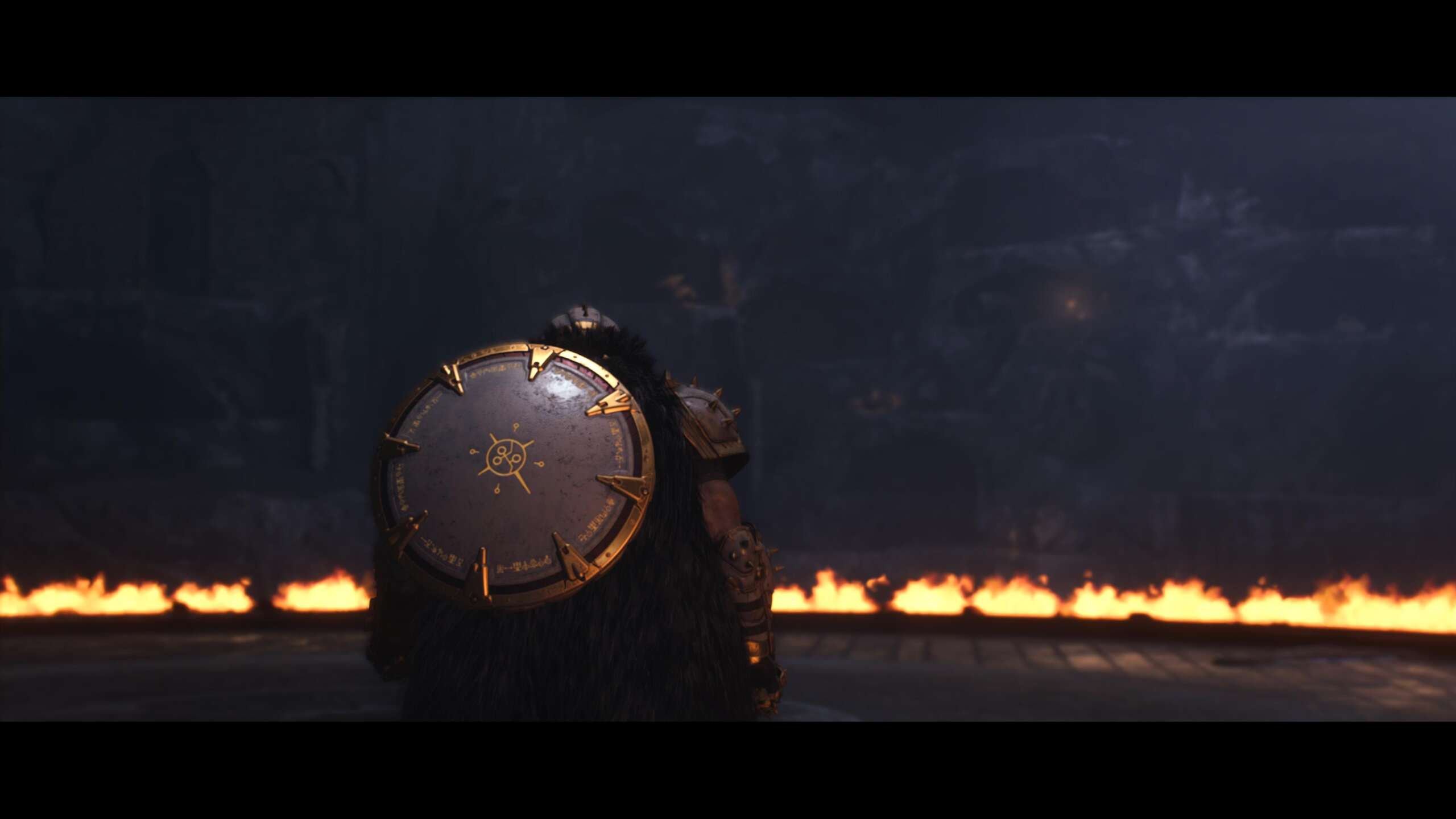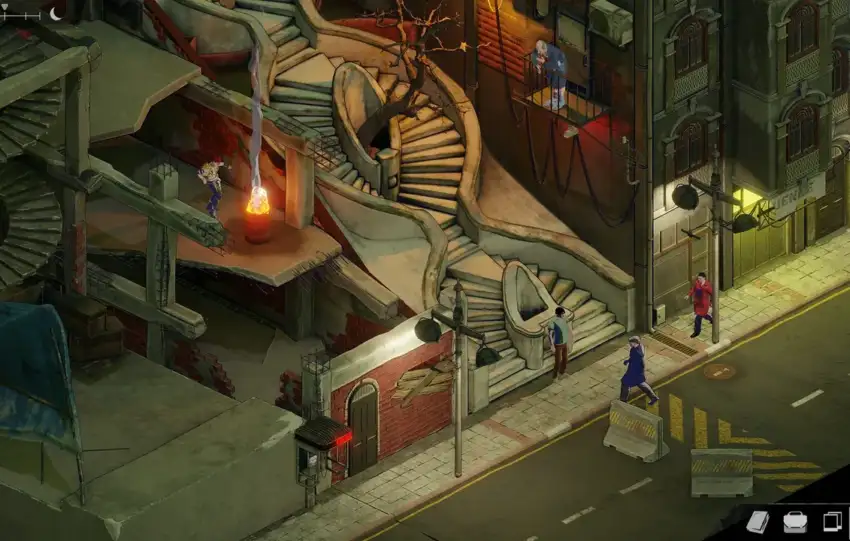In 2016, Doom returned with a bold reboot that combined classic arena shooter mechanics with modern gameplay depth and rich lore, launching a new trilogy. Now, with its final chapter, the series throws us into a medieval-inspired world and introduces fresh combat mechanics that make demon-slaying feel new all over again.

Doom: The Dark Ages is set before the events of Doom (2016), in a brutal techno-medieval universe. This theme shift brings more than just a new atmosphere—it transforms gameplay with a combat system never before seen in the series. Alongside the classic run-and-gun formula, we now wield the Shield Saw, a bladed shield that can block, parry, and be thrown. It’s at the core of this entry’s most dynamic moments. From using skull fragments as ammunition to clearing entire rooms, to throwing the Shield Saw at mini-bosses and tearing them apart mid-charge—it’s all designed to make you feel like the most brutal version of the Slayer yet.

Let me be clear: Dark Ages is slower than Doom Eternal, but the newly added combat mechanics fully justify the change. You lose none of the intensity. In fact, after unlocking certain upgrades, the speed starts to rival that of Doom (2016). One of the standout features is how naturally the Shield Saw fits into the gameplay. What may seem like a strange concept on paper ends up being brilliantly executed. It even plays a role in puzzle-solving and movement—used to dash toward weak points, trigger switches, or break barriers. The fact that id Software integrated it so seamlessly into both the mechanics and the world is genuinely impressive.

When it comes to weaponry, Doom: The Dark Ages delivers once again. Every gun feels powerful, satisfying, and brutally fun to use. The Pulverizer converts collected skulls into high-speed bone shrapnel, perfect for wiping out waves of demons in a single blast. The Cycler, a plasma-type weapon, stuns enemies with arcing electricity and unloads with a high rate of fire. Then there’s the Shredder, which launches spiked projectiles that rip through armor and limbs with vicious precision.The Chainshot fires a spinning ball and chain that drills into larger enemies, immobilizing them while you finish the job. Classic staples like the Grenade Launcher and Rocket Launcher return in full force, maintaining the series’ signature chaos. And of course, the iconic Shotgun and Super Shotgun are back with zero compromises.

Close-range combat gets a major boost with the savage melee weapons built to crush anything in your way. With the Power Gauntlet and Dreadmace in hand, melee fights feel more rhythmic and rewarding. The Power Gauntlet’s limited uses encourage strategic play. Combined with parrying green attacks, blocking red ones, and using your shield to slow, slice, or stagger demons, every encounter becomes a beautifully violent dance that only Doom could deliver.

Weapon mods and runes return, allowing you to unlock alternate firing modes, passive buffs, and visual effects. Whether it’s parry-triggered lightning strikes or bullet ricochets off your embedded Shield Saw, these upgrades create meaningful changes to combat and let every weapon evolve with your playstyle.

What makes combat more layered than previous entries is how it demands micromanagement under pressure. Your melee and shield moves are powerful, but limited by cooldowns and shield integrity. That means you can’t just spam them—you have to earn those moments, time your blocks, and chain damage sources to survive. There’s a rewarding flow in the chaos: Shield Saw out, parry a green blast mid-air, then swap to the Pulverizer to delete a crowd, and clean up stragglers with a grenade blast. This new Doom isn’t just brutal—it’s tactical brutality, and it works.

The overall combat loop in Doom: The Dark Ages is where the game truly shines. Enemy encounters are dense, aggressive, and designed to push every tool in your arsenal. This isn’t just about running and gunning anymore—it’s about reading enemy tells, knowing when to parry, and rotating between guns, shield mechanics, and melee on the fly. Early in the game, fights teach you the rhythm: stun with a Shield Saw throw, follow up with a Dreadmace slam, and finish off with a Super Shotgun blast. But late-game arenas throw dozens of threats at you at once, forcing constant movement and decision-making.

The mech suit sequences in The Dark Ages give you control of a towering metal titan built purely for close-range destruction. You trade speed and finesse for raw, bone-crunching power. Instead of precise parries or dodges, you’re lumbering across battlefield-sized arenas, throwing seismic punches and ground pounds that send demons flying. Your fists become weapons of mass destruction, and every impact lands with a satisfying shake and sound design that makes the scale feel right. There’s nothing subtle about these sequences—they’re pure spectacle—but they’re fun, and more importantly, short enough to not overstay their welcome.

The dragon-riding segments are a bit more divisive. They’re visually striking and offer variety, but compared to the grounded combat, they’re less refined mechanically. You dodge incoming fireballs and aerial mines while charging up a beam attack to break enemy shields. It’s a slower, lock-on style of gameplay that doesn’t hit with the same energy as the rest of the game. Still, it’s a cool break between heavy ground fights, and it’s worth praising id Software for trying to evolve the Doom formula without diluting it.

Level design feels familiar and satisfying. Hidden collectibles like figures, skins, ruby-like upgrade items, and lore entries make exploration rewarding. The Shield Saw also aids traversal-based puzzles, letting you activate distant triggers or bash objects into place to reach new areas.

The story follows a demon prince attempting to steal a powerful artifact. It’s not as deep or lore-heavy as Doom Eternal or its DLC, and that’s okay. This isn’t a story-first experience. You’re here to rip and tear, not reflect. The focus stays where it belongs: on the chaos, the combat, and the challenge.

On the technical side, Doom: The Dark Ages runs incredibly smooth. id Tech continues to deliver one of the most responsive engines in the industry. Load times are lightning fast, framerate holds steady even in large-scale encounters, and animation transitions—especially during shield throws and glory kills—are crisp and clean.Textures are sharp across the board, even in darker arenas where detail often gets muddy in lesser shooters. Lighting and particle effects, especially the sparks from parries and shield impacts, pop off the screen without compromising clarity.
Overall, this is a polished experience, and one that shows id Software’s obsession with keeping Doom feeling as good as it looks.

The major weak spot? The music. Sadly, the iconic heavy metal energy of Doom Eternal is missing here. Instead, we get low-impact ambient tracks that fail to match the intensity of the gameplay. It’s easily the most disappointing part of the experience, and hopefully something id Software can patch or improve with future updates, alongside audio balancing for certain sound effects.

In short, Doom: The Dark Ages is a standout evolution of the series. It keeps the soul of classic Doom alive while boldly experimenting with new systems. The combat is sharp, brutal, and deep. The weapons are creative. The Shield Saw is a game-changer. While the story and soundtrack fall short, everything else fires on all cylinders. If this game’s on your radar, don’t hesitate because this is one of the year’s most intense and inventive shooters, and it demands to be played.




